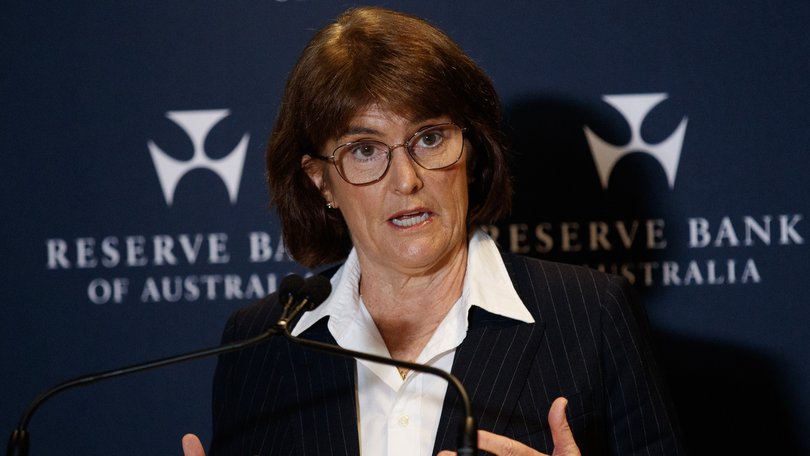Rising inflation and slowing productivity puts RBA’s interest rate cuts in doubt as underlying costs climb

Was it a stumble or a fall?
Reserve Bank governor Michele Bullock says Australia is no longer walking the “narrow path” to getting price growth under control, but a surprise rise in underlying inflation could be an indication of more obstacles along the road.
The Australian Bureau of Statistics reported trimmed mean inflation - which provides a less volatile read of prices than the headline figure - ticked up from 2.7 per cent to 2.8 per cent in the 12 months to April.
Sign up to The Nightly's newsletters.
Get the first look at the digital newspaper, curated daily stories and breaking headlines delivered to your inbox.
By continuing you agree to our Terms and Privacy Policy.While monthly figures tend to bounce around and the RBA places greater emphasis on quarterly data, a spike in dwelling costs could concern the central bank if replicated over the coming months.
Recent falls in the cost of renovating and building new homes were driven by home builders responding to weak demand with offers and promotions, said CBA senior economist Stephen Wu.
“But with the start of the RBA’s interest rate cutting cycle since February, expectations around home price growth have sharply increased,” he said.
The rates market continued to price in a two-thirds chance the RBA would cut rates at its next meeting following the ABS release.
But Mr Wu was less convinced.
“So far there’s been no smoking gun for the RBA to deliver another 25 basis point cut in their July meeting,” he said.
CBA still expects the central bank to deliver quarter percentage point cuts in August and September, which would leave the cash rate at 3.35 per cent at year end.
The Reserve Bank forecasts the trimmed mean to fall to 2.6 per cent by the middle of the year and stay there for the foreseeable future.
That’s partly predicated on the RBA’s belief declining labour productivity will rebound into growth by the end of 2025, which would defy the experience of the past decade and more.
Speaking to media following the bank’s board meeting last week, Ms Bullock said the RBA would have to adjust its forecasts if the ambitious productivity prediction did not come to fruition.
“There’s a great deal of uncertainty about productivity,” she said.
“I can’t tell you what’s going to turn it around.”
Getting productivity growing is important because without it moving in the right direction, Australia’s economic potential will be constrained.
And without positive productivity growth, wages can’t rise faster than prices without contributing to inflation.
HSBC chief economist Paul Bloxham said weak productivity would make it difficult for core inflation to fall sustainably to the mid-point of the RBA’s target band.
Poor productivity outcomes are partly down to low business investment in things like machinery and tools that boost efficiency.
Total new capital expenditure is almost a quarter lower than it was in 2012 and has barely moved in the past two years.
Although this is partly obscured by the mining boom, which inflated expenditure figures in the early 2010s, non-mining business investment in Australia has still fallen as a share of GDP growth over the past 15 years.
Fresh capital expenditure figures, to be released by the ABS on Thursday, were at least expected to show a rise in private investment, with future plans likely to point to modest growth, said AMP chief economist Shane Oliver.
